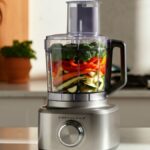Social media has redefined the way businesses connect with their audience. With billions of users scrolling through platforms like Facebook, Instagram, LinkedIn, and Twitter daily, it’s no longer enough to simply “be online.” To truly stand out, you must optimize your social media presence. Enter Social Media Optimization (SMO)—a strategic approach that boosts visibility, engagement, and conversions.
This guide will unpack everything you need to know about SMO, why it matters, and actionable tips to maximize your social media performance.
Why Social Media Optimization is Essential
Social media is not just a megaphone for promoting products—it’s an ecosystem for meaningful conversations, trust-building, and brand awareness. Social Media Optimization bridges the gap between simply having social media accounts and turning them into powerful marketing tools.
The Benefits of SMO
- Boosts Visibility
Well-optimized social media profiles rank higher in searches on platforms and search engines like Google, making it easier for potential customers to find you.
- Enhances Engagement
Engaging posts and optimized profiles encourage followers to interact with your content, keeping your brand top-of-mind.
- Strengthens Brand Authority
Consistent, high-quality content and a cohesive strategy establish your brand as a trusted industry leader.
- Drives Website Traffic
Smart use of social media optimizations—like clickable links in posts or bios—helps funnel users to your website, increasing your chances of conversions.
With unlimited benefits, the importance of this strategy becomes clear. But how do you successfully implement SMO?
How to Optimize Your Social Media Presence (Step by Step)
1. Perfect Your Profiles
Your social media profile is essentially your digital storefront. It’s often the first point of contact for new customers, so make it count.
What You Should Optimize:
- Profile Pictures
Use a high-resolution logo or professional image that is instantly recognizable.
- Bios
Include a concise brand description, focus keywords, and a link to your website. For instance, a bio might read:
“Helping small businesses unlock their potential with social media marketing | www.example.com”
- Contact Information
Always have up-to-date contact details like email, phone numbers, and location (if applicable).
- Custom URLs
Use unique, branded URLs on platforms like Facebook, LinkedIn, and Instagram to align with your business name.
Tip:
Audit your profiles quarterly to ensure visuals and information stay current.
2. Use Data-Driven Content
Not all content is created equal. To capture your audience’s attention, focus on what works, and nothing informs you better than data!
Steps to Leverage Data for SMO:
- Analyze Past Performance
Use platform analytics (e.g., Facebook Insights, Instagram Insights) to review engagement metrics. Which posts performed best, and why?
- Understand Your Audience
Tools like Facebook Audience Insights or Twitter Analytics can help refine demographics, behaviors, and preferences.
- Implement A/B Testing
Test varying formats (images versus videos) or messaging styles to determine what resonates most.
Content Ideas:
- Tips in your niche
- How-to videos
- Polls and surveys for engagement
- Inspirational quotes or stories
Aim for a mix of educational, entertaining, and promotional content—typically 80% value and 20% promotional.
3. Leverage Social Media Features
Each platform offers unique features to drive engagement and optimize reach. Familiarize yourself with them and make the most of their potential.
Examples of Engage-worthy Features:
- Instagram: Stories, Reels, and Guides
- Facebook: Groups and Live Events
- LinkedIn: Articles and company updates
- TikTok: Trending challenges and short video content
Using these features not only boosts engagement but also signals to the algorithm that your content is relevant.
4. Optimize Posting Schedules
Timing matters. Posting when your audience is most active maximizes visibility, engagement, and overall impact.
Best Practices for SMO Scheduling:
- Know Your Audience’s Time Zones
If your audience is global, adapt your schedule to overlap with their awake hours.
- The Right Frequency
Consistency is key, but avoid overwhelming your audience. Here’s a general frequency guide:
- Instagram: 4-5 times/week
- Facebook: 3-5 times/week
- Twitter/X: 2-3 times/day
- LinkedIn: 2-3 times/week
- Scheduling Tools
Use tools like Buffer, Hootsuite, or Later to queue posts in advance for optimized timing.
5. Don’t Forget SEO for SMO
Search Engine Optimization (SEO) and Social Media Optimization go hand-in-hand. When used smartly, SEO techniques can make your posts more discoverable.
Ways to Integrate SEO into SMO:
- Use Keywords
Include relevant search terms in your bio, captions, and even hashtags.
- Optimized Headlines
If sharing a blog or article, choose catchy, keyword-optimized titles.
- Alt Text for Images
Platforms like Instagram allow users to add alt text for better accessibility and indexing.
- Hashtag Optimization
Use a mix of popular, niche, and branded hashtags for maximum reach (e.g., “#Social Media Marketing”, “#SMOTips”, “#You Brand Name”).
6. Engage, Don’t Just Automate
While automation is a time-saver, the personal touch is irreplaceable. Responding to comments, DMs, and shares shows your audience that you genuinely value them.
Examples of interactive tactics:
- Run caption contests
- Reply to comments with enthusiasm or additional value
- Seek genuine feedback using polls or surveys
Turning “followers” into “fans” requires authentic engagement.
The Power of Analytics for Improving SMO
Social media optimization isn’t a one-and-done activity—it is an iterative process. Regularly analyze account performance for insights, and adapt strategies accordingly.
Helpful KPIs to Monitor:
- Reach and Impressions
- Click-Through Rates (CTR)
- Engagement Rate (Likes, Shares, Comments)
- Follower Growth
- Conversion Rates (from social media)
Use dedicated tools like Google Analytics, Sprout Social, or HubSpot to measure ROI and fine-tune strategies.
Take Your Social Media Marketing to the Next Level
Social Media Optimization is a game-changer in today’s digital landscape. From fine-tuning your profiles to implementing data-centric improvements, optimizing your strategy can dramatically boost your brand’s reach, engagement, and bottom-line results.
If this guide has piqued your interest but you’re unsure where to start, take small, consistent steps. Experiment, learn, and evolve.
Remember, you don’t have to go it alone. Partnering with experts or leveraging tools designed for optimization can fast-track your results. Implement these strategies today, and watch the transformation unfold.
FAQs
1. What is Social Media Optimization (SMO)?
Social Media Optimization (SMO) involves enhancing your social media profiles, content, and strategies to maximize your online visibility, engagement, and reach. By refining these elements, you can drive more meaningful interactions with your target audience.
2. Why is SMO important for businesses?
SMO is vital because it helps businesses reach potential customers, build brand awareness, and drive website traffic. It also improves customer engagement and can lead to higher conversions by fostering trust and loyalty.
3. What tools can I use for Social Media Optimization?
Some popular tools for SMO include Hootsuite, Buffer, Sprout Social, and HubSpot. These platforms offer features like scheduling posts, monitoring analytics, and optimizing content for maximum engagement. Other useful tools include Canva for creating visually appealing graphics and Google Analytics for tracking website traffic from social media. It’s best to research and test out different tools to find the ones that work best for your specific needs. Overall, using a combination of these tools can help streamline your SMO efforts and improve results. So don’t be afraid to experiment and see what works best for your business!










